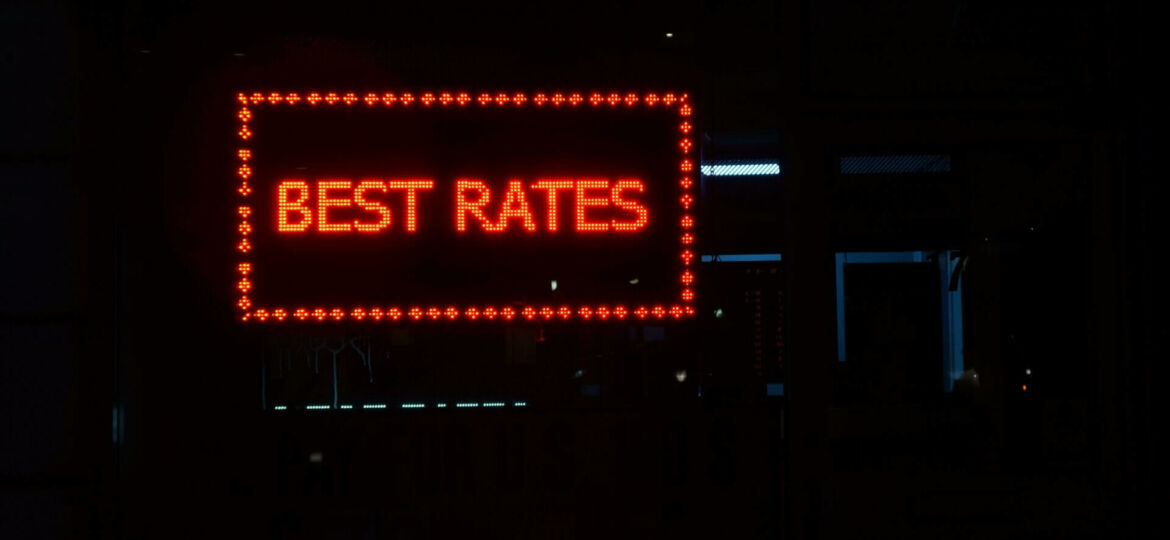
A variable interest rate is a rate on a loan or security that fluctuates over time. This sort of rate is sometimes referred to as an “adjustable” or “floating” rate because it is based on an underlying benchmark interest rate or index that changes periodically. When you come to borrow money, you will see many references to interest rates, so understanding what they mean and when can be very important.
Variable interest rates fluctuate over time because they change with the market. They are most commonly found in mortgages, corporate bonds, credit cards, derivatives, and other securities or loans.
What Are the Features of Variable Interest Rates?
The benchmark interest rate or index that underlines a variable interest rate depends on the type of loan or security. However, it is typically associated with either the federal funds rate – the target interest rate set by the Federal Open Market Committee, or the London Inter-Bank Offered Rate (LIBOR), an international benchmark interest rate at which major global banks lend.
However, variable interest rates for credit cards, mortgages or automobiles may be based on a benchmark rate such as the prime rate in a country. This is the interest rate that commercial banks charge their most creditworthy corporate customers. Variable interest rates can also be found in corporate bond issues, swap contracts and residential mortgages.
Variable interest rate loans function similarly to credit cards except for the payment schedule. Whilst credit cards are considered a revolving line of credit, most variable interest rate loans are installment loans.
What Are the Different Types of Interest Rates?
Besides a variable interest rate, there is also a fixed interest rate. This is an unchanging rate charged on a liability, such as a mortgage or a loan. This may either apply for just part of the term of a loan, or the entire term, either way, the interest rate will stay the same throughout its set period.
Sometimes, there also appear such things as hybrid loans; this is where a loan possesses both a fixed rate and an adjustable rate. For example, mortgage loans can have multiple interest-rate options, including one that combines a fixed rate for some portion of the term and an adjustable rate for the balance.

Variable Interest Rate Loans and Mortgages
When a mortgage has a variable interest rate, it is commonly referred to as an adjustable-rate mortgage (ARM). Many ARMs start with a low fixed interest rate for the first few years of the loan, only adjusting after that period has expired.
There are also usually adjustment “caps” that put a limit on how much the interest rate can go up or down when it adjusts. You can use an online calculator to get an estimate of current interest rates on adjustable-rate mortgages.
Comparing Variable and Fixed Interest Rates
The most obvious advantage to a variable interest rate is that if the underlying interest rate or index declines, the borrower’s interest payments will also fall. Generally, variable interest rates are also initially lower than fixed interest rates.
If interest rates either fall or go up, those with variable interest rates will be the ones who stand to benefit. Nevertheless, variable interest rates may go up to the point where the borrower may have difficulty paying the loan.
Furthermore, variable interest rates make it harder for a lender to predict future cash flows and, notably, the unpredictability of these rates also makes it harder for a borrower to budget.
On the other hand, a fixed interest rate avoids the risk that a mortgage or loan payment can significantly increase over time. A fixed interest rate is also attractive to borrowers who do not want their interest rates fluctuating over the term of their loans, potentially increasing their interest expenses.
As a result of this, fixed interest rates offer a greater sense of predictability to borrowers. They are also easier to calculate over the long-term, or even short-term, costs of borrowing. Nonetheless, some cons to fixed interest rates are that they may be initially higher than adjustable rates and if rates decline, you may end up paying more for your loan. Redefining to a lower rate can also be time-consuming and expensive.
Which is Better, Variable or Fixed?
All in all, it is not always the case that either a variable or fixed interest rate is necessarily the better option. Both have their advantages and disadvantages, and both work well for the different payments we make. However, certain conclusions can be made and drawn upon when you are considering the differences between variable and fixed interest rates for a loan.
Whether you are applying for a new mortgage, refinancing a current mortgage, or applying for a personal loan like a payday loan or credit card, understanding the differences between variable and fixed interest rates can help you save money and meet your financial goals.
Studies have found that over time, a borrower is likely to pay less interest overall with a variable rate loan than with a fixed-rate loan. However, historical trends aren’t necessarily indicative of future performance, and the determination of whether a fixed rate or variable rate loan is better must ultimately depend on the borrower’s personal financial profile and preferences.

